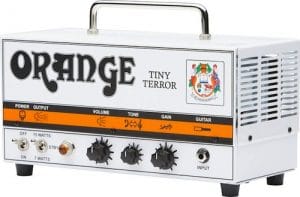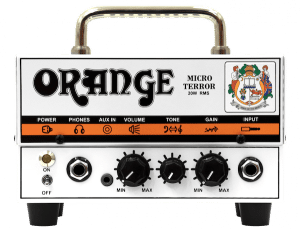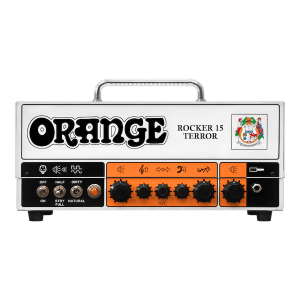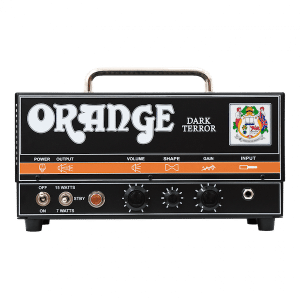Orange Tiny Terror Review
Table of Contents
When Orange came along with the Orange Tiny Terror, guitarists rejoiced… and rightfully so. During the late nineties and into the new millennium. Touring guitarists and studio musicians were returning the glory of a low wattage amp. In Rock n Roll’s infancy, guitarists were forced to use low wattage amps because they had no choice.
As manufacturers continued to push the watts higher and higher, guitarists followed suit blindly believing that more watts meant a better sound. Eventually, guitarists came back to their roots after the fall of “metal” and “grunge.” Manufacturers like Matchless and Top Hat seemed to lead the charge with amazing boutique amps usually modeled after the Vox AC15.

Before you knew it, custom amp companies were popping up all over the country sporting 30, 15 and even 5 watt amplifiers. Some of these were very good, some of them not so good. But nearly all of them priced above the price range of your average player.
Variations
A few variations of the Tiny Terror have been added to the lineup including the Tiny Terror Handwired edition. Whatever your flavor, when you’re looking for a great sounding, affordable, low-wattage amplifier check out the Terror lineup.
-
Orange Micro Terror AMP 20W – inspired by the Tiny Terror, game-changing ‘lunchbox’ amplifier
-
Orange Dual Terror AMP DT30H – Two channels of Terror
-
Orange Rocker 15 AMP Terror
-
Orange Dark Terror AMP DA15H – 15W lunchbox amp with a darker side
My Experience With the Orange Tiny Terror
I bought my Tiny Terror used on eBay about 2 years ago, admittedly behind the “boom” of low wattage amps. But I haven’t looked back since. This 15 watt amp (switchable to 7 watts) was the exact fit for the sound I have been searching for.
I play rock, blues and some pop and the Tiny Terror delivers in every one of these arenas. I mostly play a Stratocaster with Kinman pickups and a ’74 Les Paul Goldtop.
The Tiny Terror plays well with both guitars, as well as nearly any pedal I put in front of it. I won’t get into the specs of the amp; you can check the Orange site for that. I will tell you that the gorgeous tone is delivered through (2) 12ax7’s in the pre-gain stage. And (2) el84’s in the post, and the size of the Tiny Terror makes it easily transportable with the added gigbag.
Live Performance
Whether I’m playing a mid-sized club, practicing in my bedroom or leading at church. The Tiny Terror has plenty of voice to be heard but retains a decent volume level without the use of sound curtains. Anything larger than a mid-sized club and you’ll need to mic it, but nearly any sound guy would do that to any amp in a larger venue.
I leave the volume and gain controls both at about 12 o’clock. To my ear, this is the perfect amount of volume and adds just enough break-up to the tone to get you excited.
With PLENTY of gain on top, you could very easily pump the gain up and simply back off on your guitar’s volume to clean up the tone when necessary, or throw a nice overdrive pedal in front of it. Orange describes the tone as a “clean crunch” and I couldn’t agree more. It’s that perfect tube saturation that countless guitarists search for. But rarely find in an amp priced under $1400 (around $550 from most Orange dealers).
In the Studio
In the studio, the Tiny Terror simply performs. The single flaw I find with the TT is that it is hard to get a squeaky clean tone out of it. If you’re looking for clean tones turned up to 11 you’re barking up the wrong tree. This amp was specifically designed to breakup early so guitarists could get that wonderful tube crunch at lower volumes.
I ran the TT in parallel with a Fender Twin on my last recording in order to pull up clean tones when needed. For rock, blues, pop and even some jazz, the Tiny Terror will stick with and even outperform many of the boutique amps on the market today.





Leave a Reply
You must be logged in to post a comment.